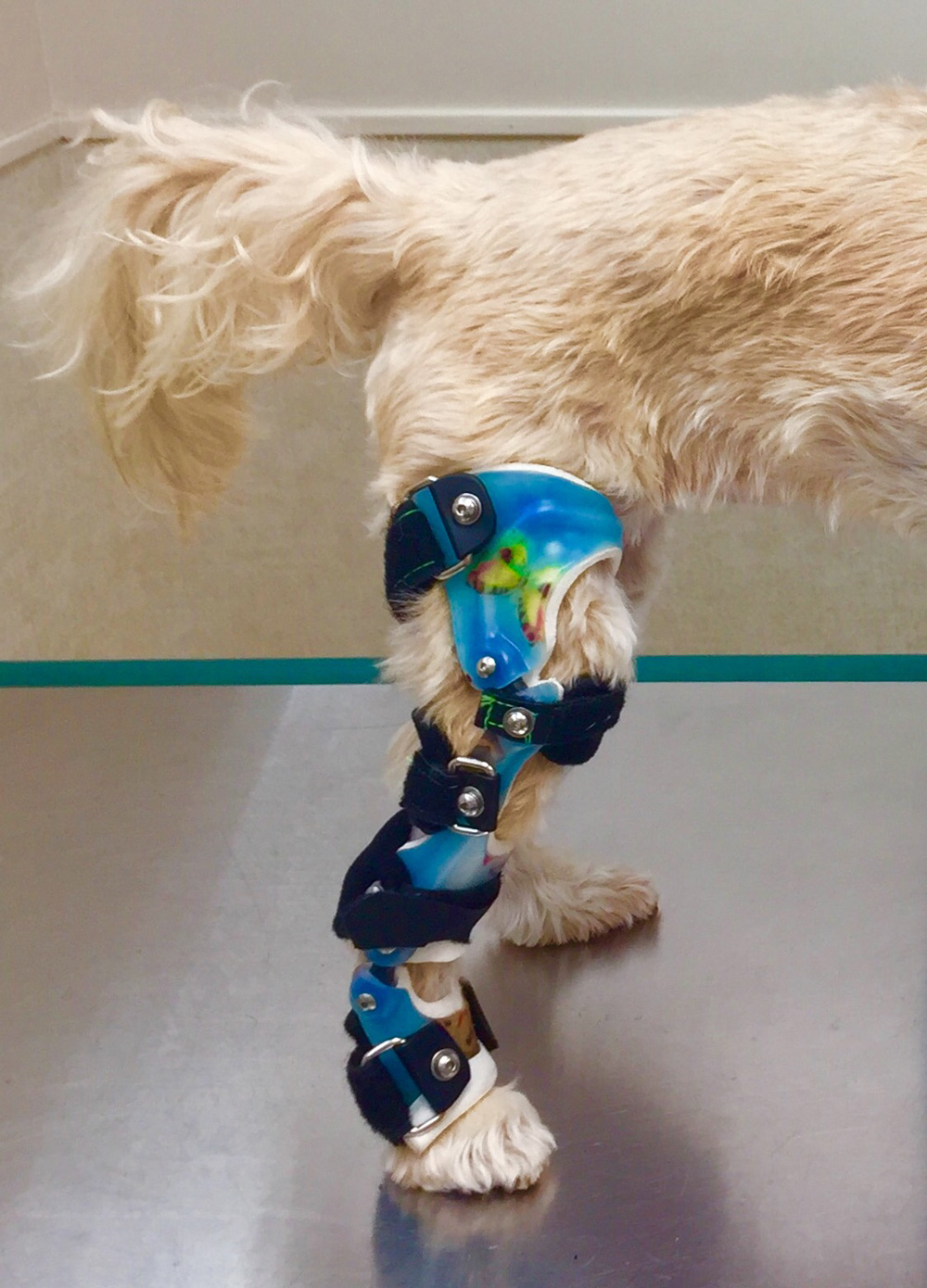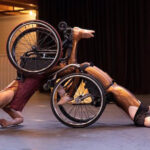So, your dog is limping from one of the back legs. You may have noticed limping on and off for a few months. Or perhaps, you have observed a sudden lameness, just for a couple of days. Your veterinarian diagnosed a knee problem, and you have been told that your pet needs surgery. You are not alone.
Knee or stifle conditions are some of the most common orthopedic problems seen in dogs. The stifle is a complex joint found midway in the back leg of your dog. It involves three bones: the femur, the patella (kneecap) and the tibia. Even though the stifles can be affected by a large number of conditions, by far the most common ones are patellar luxations and anterior cruciate ligament (ACL) tears. There are a number of treatment options for these conditions, all of which keep expanding with advances in veterinary medicine.
Treatment recommendations are not cookie cutter, and must be formulated based on the individual physical characteristics of the dog, the lifestyle of the dog, and the specific stifle pathology of the joint. Treatment recommendations are also dependent on the level of expertise and knowledge of the doctor performing the evaluation and recommendation. Stifle orthopedic problems can produce much confusion among dog owner when it comes to treatment. Often, owners seek second opinions for treatment options. Cats can also suffer from ACL tears and patellar luxations, even though they’re not as common as in dogs.
The orthopedic conditions of the stifle and the possible treatment approaches are complex and very patient-specific. The important point to remember is that if your dog shows persistent lameness in one of the back legs, do not ignore it. Get a proper diagnosis by a licensed veterinarian as soon as possible. Conservative treatment should be initiated first (rest, anti-inflammatories, analgesics, professional physical therapy, custom made orthopedic devices) before surgery is considered. Remember that the surgical repair of these conditions is not an emergency that needs to be dealt with within one or two weeks. Surgery is not without complications, and when planning on it, an experienced veterinary orthopedic specialist is required. If your dog has problems on both stifles, avoid surgical repair of both limbs on the same day. It is best to have surgery on one leg at a time, because recovery is faster when there is a healthy leg to assist with strength and balance.
Professional physical therapy, when provided by a veterinarian with accreditation in this field (Certified Canine Rehabilitation Practitioner, CCRP) will manage the stifle diseases without the need for surgical intervention for certain patients. On the other hand, when surgery is required, physical therapy can maximize the level of recovery, and shorten the recovery time. It is your responsibility to make the best medical decision for your canine best friend. Do not rush your decision for treatment. Always get second and third opinions, if you need to.
Dr Sanchez-Emden is the founder of the Animal Health and Rehab Center in South Miami. She has been practicing veterinary medicine for 25 years. As a Certified Veterinary Journalist, she is the resident veterinarian for Telemundo. She authored the book “CHIHUAHUAS: How To Be Your Dog’s Best Friend”. She also hosts the podcast show “Hablando de Perros y Gatos con Dr Marta” available at the main internet platforms. Follow her her blog, drmartavet.com, and on social media @Drmartavet on You Tube, Instagram and Twitter. Also find her at Facebook.com/dr.sanchezemden and animalhealthrehab.com














 Deering Estate
Deering Estate
 Massage Envy South Miami
Massage Envy South Miami
 Calla Blow Dry
Calla Blow Dry
 My Derma Clinic
My Derma Clinic
 Sushi Maki
Sushi Maki
 Sports Grill
Sports Grill
 The Healthy Kitchen
The Healthy Kitchen
 Golden Rule Seafood
Golden Rule Seafood
 Malanga Cuban Café
Malanga Cuban Café

 Kathleen Ballard
Kathleen Ballard
 Panter, Panter & Sampedro
Panter, Panter & Sampedro
 Vintage Liquors
Vintage Liquors
 The Dog from Ipanema
The Dog from Ipanema
 Rubinstein Family Chiropractic
Rubinstein Family Chiropractic
 Your Pet’s Best
Your Pet’s Best
 Indigo Republic
Indigo Republic




 ATR Luxury Homes
ATR Luxury Homes


 2112 Design Studio
2112 Design Studio
 Hamilton Fox & Company
Hamilton Fox & Company
 Creative Design Services
Creative Design Services
 Best Pest Professionals
Best Pest Professionals
 HD Tree Services
HD Tree Services
 Trinity Air Conditioning Company
Trinity Air Conditioning Company
 Cisca Construction & Development
Cisca Construction & Development
 Mosquito Joe
Mosquito Joe
 Cutler Bay Solar Solutions
Cutler Bay Solar Solutions


 Miami Royal Ballet & Dance
Miami Royal Ballet & Dance
 Christopher Columbus
Christopher Columbus
 Pineview Preschools
Pineview Preschools
 Westminster
Westminster
 Carrollton
Carrollton
 Lil’ Jungle
Lil’ Jungle
 Frost Science Museum
Frost Science Museum
 Palmer Trinity School
Palmer Trinity School
 South Florida Music
South Florida Music
 Pinecrest Orthodontics
Pinecrest Orthodontics
 Dr. Bob Pediatric Dentist
Dr. Bob Pediatric Dentist
 d.pediatrics
d.pediatrics
 South Miami Women’s Health
South Miami Women’s Health

 The Spot Barbershop
The Spot Barbershop
 My Derma Clinic
My Derma Clinic




 Miami Dance Project
Miami Dance Project

 Rubinstein Family Chiropractic
Rubinstein Family Chiropractic
 Indigo Republic
Indigo Republic

 Safes Universe
Safes Universe
 Vintage Liquors
Vintage Liquors
 Evenings Delight
Evenings Delight





 Atchana’s Homegrown Thai
Atchana’s Homegrown Thai
 Baptist Health South Florida
Baptist Health South Florida

 Laser Eye Center of Miami
Laser Eye Center of Miami
 Visiting Angels
Visiting Angels
 OpusCare of South Florida
OpusCare of South Florida

 Your Pet’s Best
Your Pet’s Best





 HD Tree Services
HD Tree Services
 Hamilton Fox & Company
Hamilton Fox & Company


 Creative Design Services
Creative Design Services